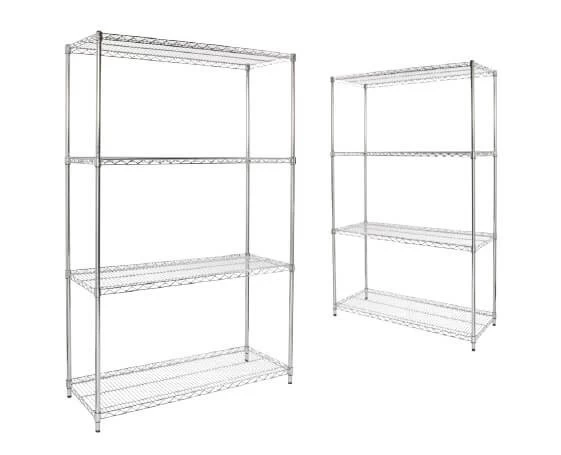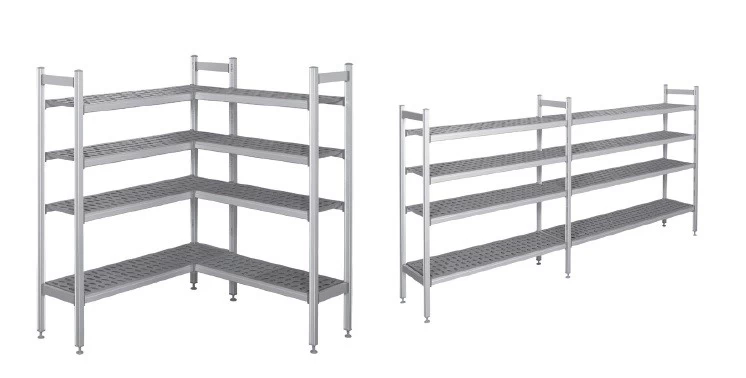Cold storage shelf systems are essential components of cold chain logistics, providing efficient storage solutions for preserving perishable goods at optimal temperatures. These specialized shelving units are designed to maximize space utilization, enhance inventory management, and maintain the quality of stored products by ensuring consistent cooling throughout the storage area. They are crucial in various sectors, including food and beverage, pharmaceuticals, agriculture, and floral industries, where controlled temperature conditions are vital for product integrity.
Key Features of Cold Storage Shelf Systems
- Temperature Management: Cold storage shelves are designed to facilitate uniform air circulation and temperature distribution, ensuring that all stored items remain within their required temperature range. This is crucial for preventing spoilage and ensuring the longevity of perishable goods.
- Modular Design: Many cold storage shelving systems feature a modular design, allowing for customizable configurations that can be adapted to different space requirements and storage needs. This flexibility is essential for optimizing storage efficiency and accommodating business growth or changes in inventory.
- Material Durability: Materials used in cold storage shelving must withstand low temperatures and humidity levels without corroding or degrading. Stainless steel and aluminum are commonly used for their durability and resistance to cold-related stresses.
- Space Optimization: Efficient use of vertical and horizontal space is a hallmark of cold storage shelf systems, enabling businesses to store as much product as possible in limited spaces. This is particularly important in cold storage environments, where maximizing storage capacity can significantly impact operational costs.
- Accessibility and Organization: Cold storage shelves are designed to facilitate easy access to stored items, supporting efficient inventory management practices. Options like adjustable shelves, sliding doors, and mobile units help streamline operations and reduce the time spent locating and retrieving products.
Types of Cold Storage Shelf Systems
- Static Shelving: Ideal for storing items that do not require frequent access. These shelves are fixed in place and provide stable storage for heavy loads.
- Mobile Shelving: Equipped with wheels or tracks, mobile shelving can be moved to create access aisles as needed, maximizing storage density and flexibility.
- Pallet Racking: Designed for high-capacity storage, pallet racking systems accommodate palletized goods, allowing forklift access for loading and unloading.
- Drive-In/Drive-Thru Racking: These systems allow forklifts to enter the racks to load or unload pallets, maximizing space utilization by reducing aisle space requirements.
- Flow Racks: Utilizing gravity-fed rollers or conveyors, flow racks present items to the front of the storage system as they are used, ideal for first-in-first-out(FIFO) inventory management.
Considerations for Cold Storage Shelf Systems
- Temperature Requirements: Understanding the specific temperature and humidity needs of the stored products is crucial for selecting the appropriate shelving solution.
- Compliance and Safety: Shelving systems must comply with industry standards and safety regulations, especially in food handling and pharmaceutical storage.
- Energy Efficiency: Proper layout and design of shelving systems can contribute to energy savings by optimizing airflow and reducing the workload on cooling systems.
- Cost: While initial setup costs for cold storage shelving can be high, the long-term benefits of reduced product spoilage and improved efficiency often justify the investment.
Implementing an effective cold storage shelving system requires careful planning and consideration of the unique needs of the products being stored.





